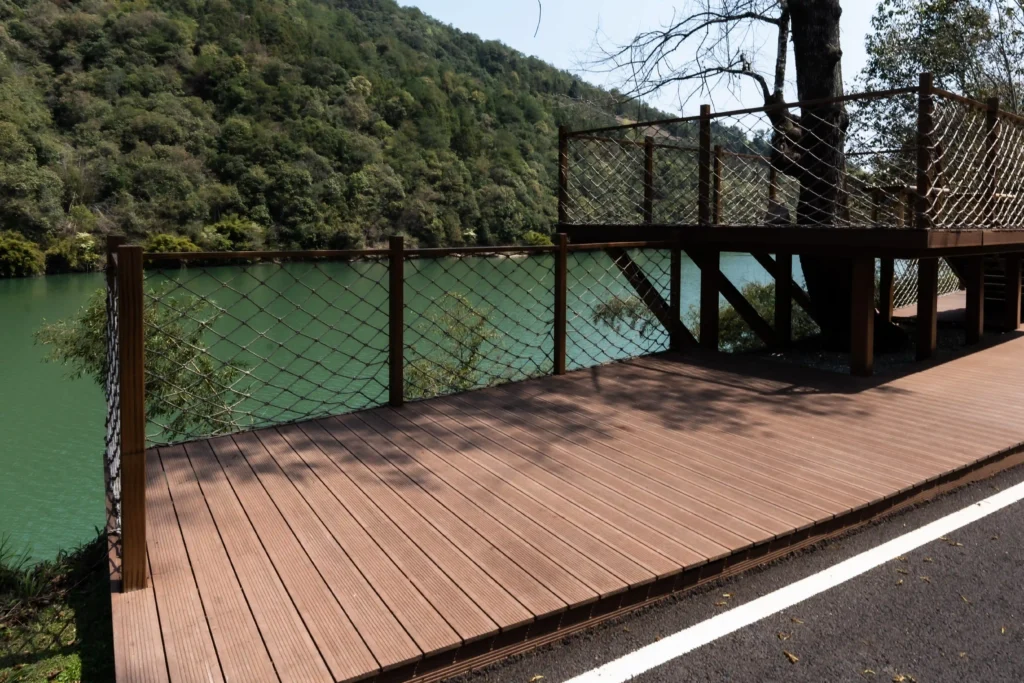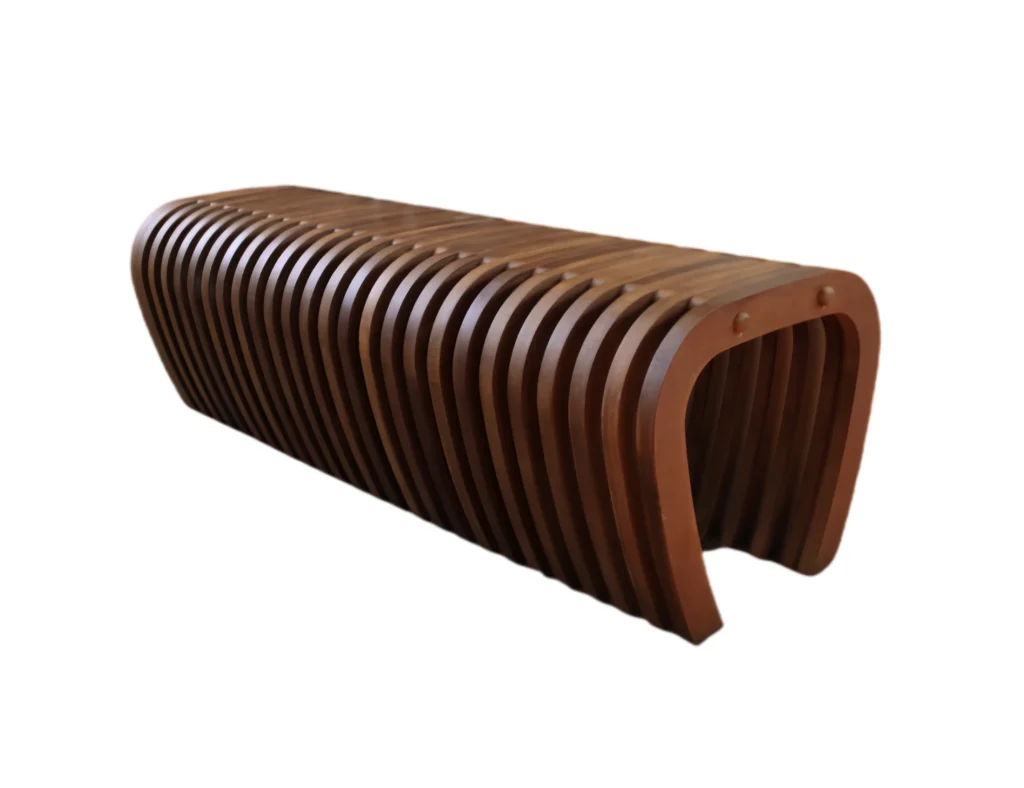Discover the Science Behind Thermo Bamboo
Revolutionizing bamboo into high-performance, durable materials
What is Thermo Bamboo?
Thermo bamboo, also known as thermo-treated bamboo scrimber, is an engineered material made by recombining bamboo strands under high heat and pressure.
While bamboo is a fast-growing and renewable resource, its natural form is susceptible to decay, deformation, and pest damage.
Through a carefully controlled 20-step process, raw bamboo is transformed into Thermo Bamboo. This process removes sugars, enhances durability, and restructures the bamboo at the molecular level, producing a material that offers:
Thermo bamboo is ideal for demanding outdoor applications in architecture, landscaping, and home furnishings.
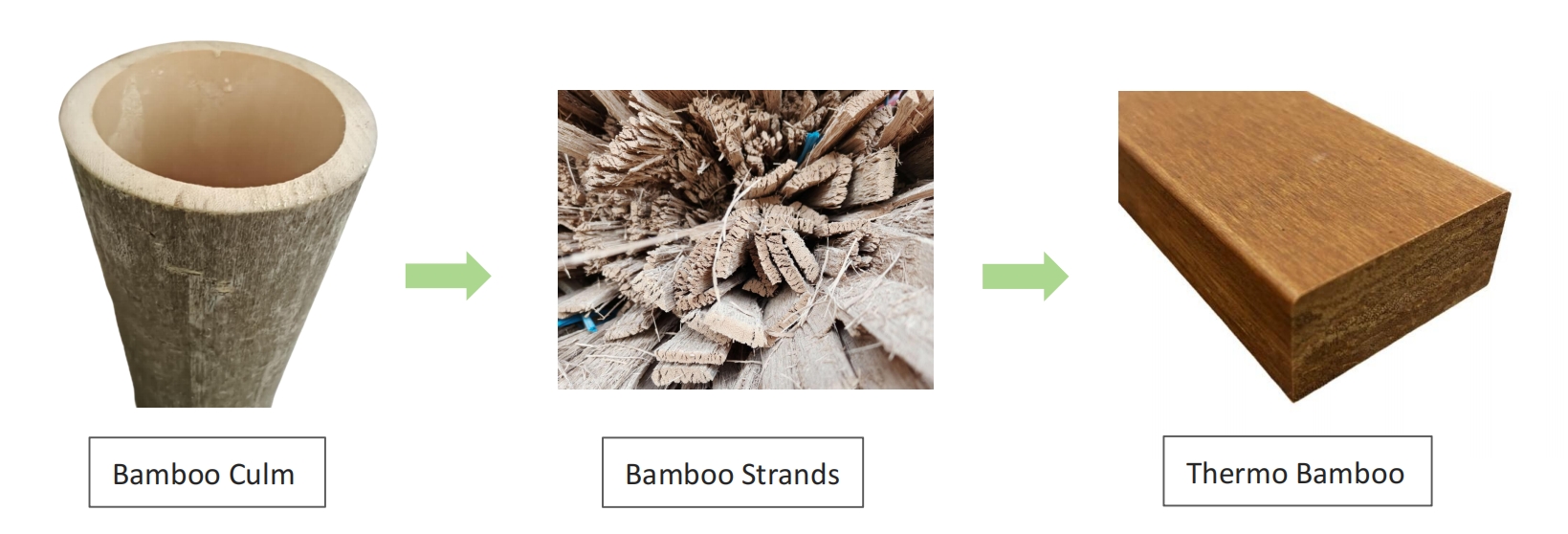
Applications:
ZHUART Thermo Bamboo Production Process
1. Raw Material Selection
ZHUART’s thermo bamboo products begin with carefully selected Moso bamboo (Phyllostachys edulis), harvested at the age of 4 to 6 years. These culms are sourced from responsibly managed plantations in Fujian and Zhejiang provinces, regions known for their bamboo resources. At this stage of maturity, the bamboo reaches ideal fiber density and uniform structure, which are critical for the stability and performance of thermo-treated materials.
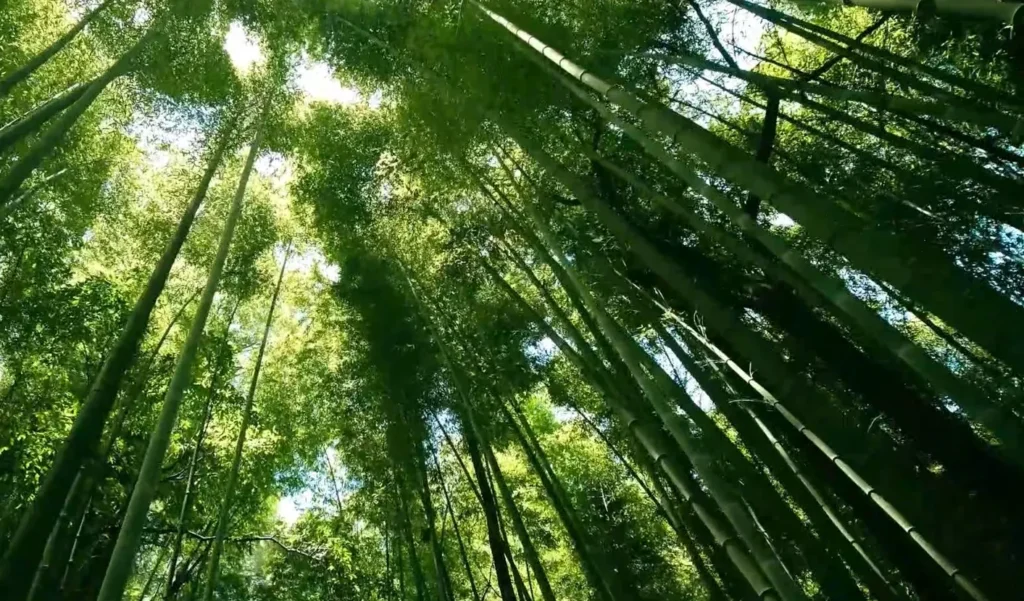
2. Strand Preparation
The harvested Moso bamboo culms are split into uniform strips, and then passed through a rolling machine that separates the bamboo fibers. This step, called defibering, helps loosen the compact structure and forms long, flexible bamboo strands.
During this process, both the outer bamboo skin and the inner layer are carefully removed. Only the middle tissue (bamboo meat) is retained.
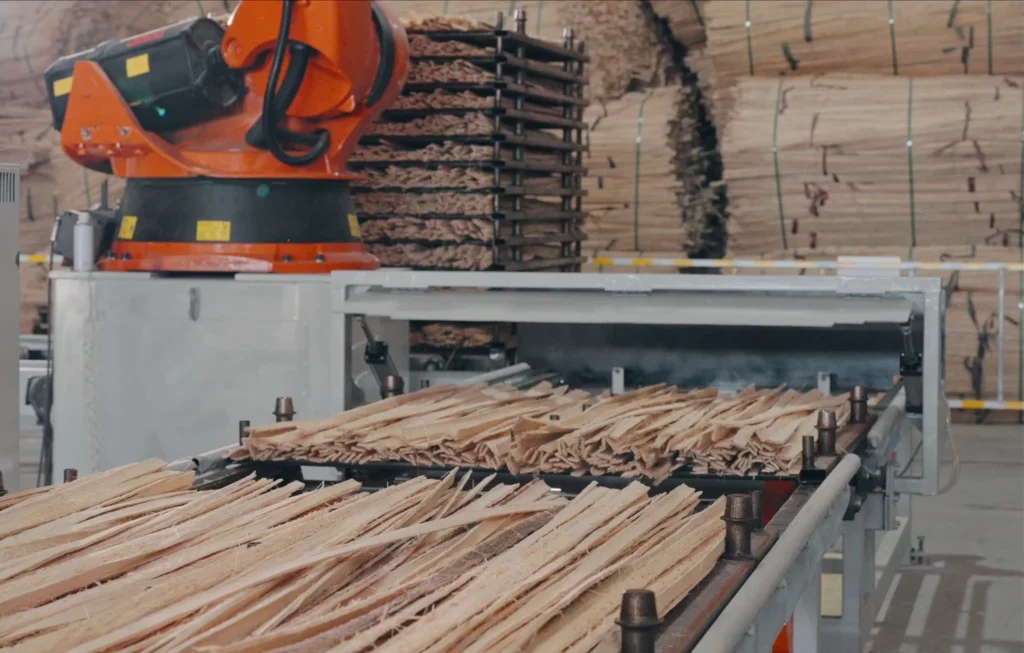
3. Thermal Modification
To enhance the durability and stability of bamboo fibers, ZHUART applies two thermal treatment methods based on product type:
Both processes serve two functions:
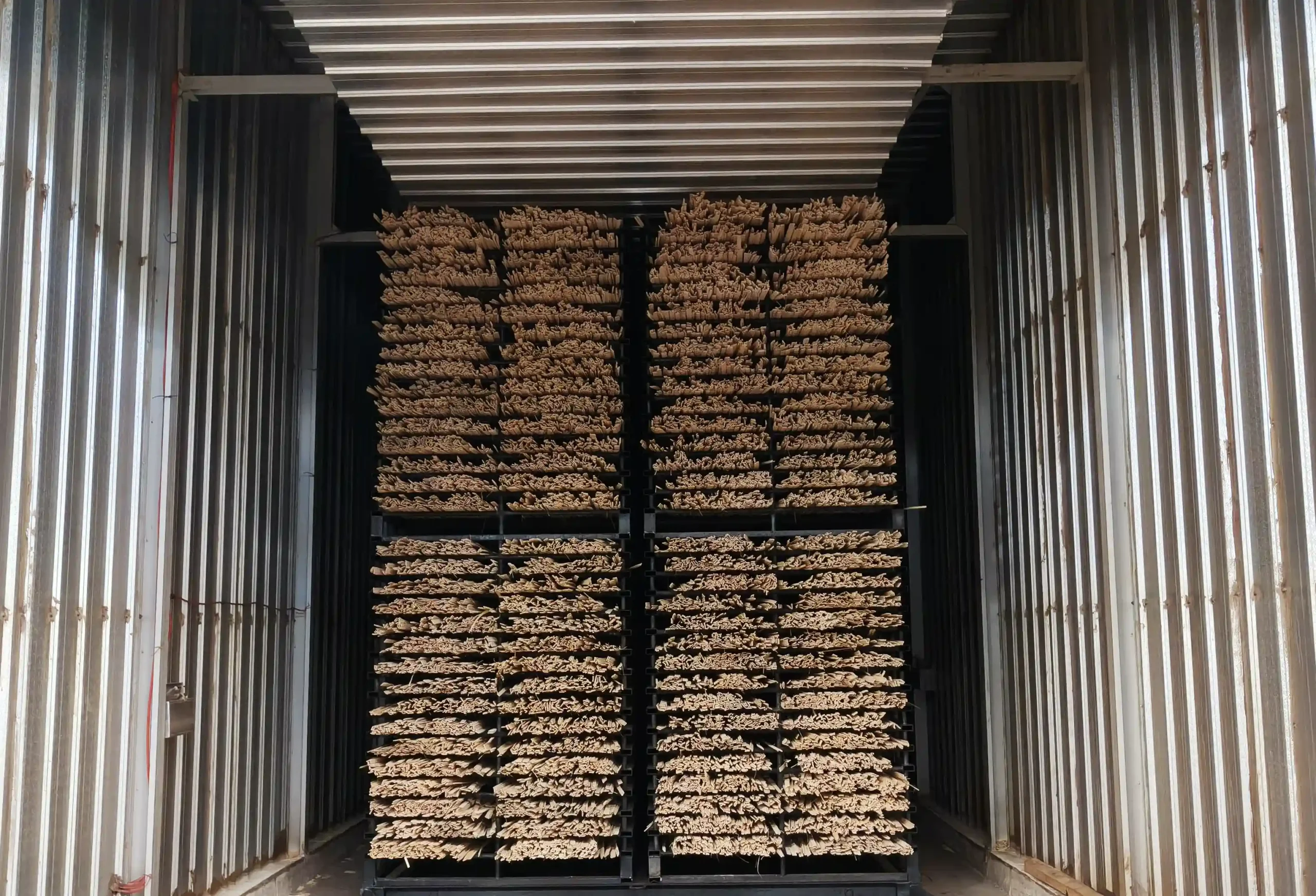
4. Resin Application
After thermal modification, the bamboo strands are immersed in phenolic resin (also known as bioglue) to bond the fiber bundles together. During this process, the resin penetrates deeply into the bamboo’s cellular structure, filling internal voids and coating each fiber to form a strong and cohesive internal matrix. Excess resin is then drained, and the strands are carefully dried to reach the optimal moisture content before hot pressing.
Phenolic resin is commonly used in outdoor-grade engineered wood. It helps reduce surface cracking and significantly improves water resistance and dimensional stability.
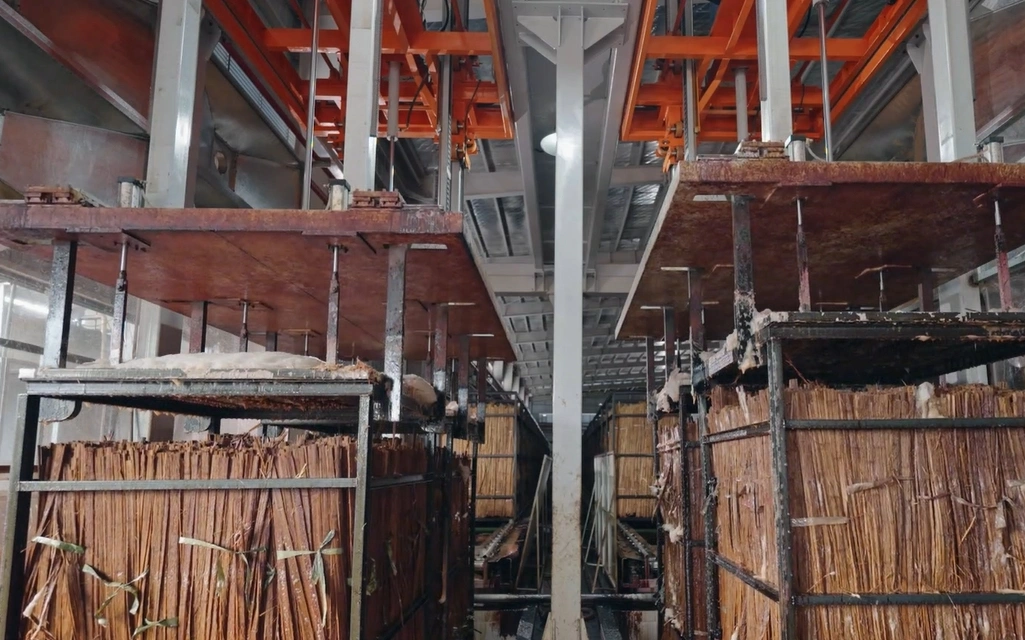
5. High-Density Compression
ZHUART uses hot pressing to transform bamboo strands into dense, durable structural materials. During hot pressing, the strands are layered into molds and compressed under temperatures of up to 132°C and pressures reaching 22 MPa, with steam circulating throughout the press system. Heated platens evenly transfer thermal energy, allowing the resin to fully flow and cure within the bamboo fiber bundles.
The combination of heat and pressure creates strong internal bonding, significantly enhancing dimensional stability and resistance to moisture, decay, and warping. In this process, a 15 cm thick bamboo mat can be compressed into a 2.1 cm board.
ZHUART operates the industry’s largest 5400-ton press and is the only manufacturer capable of producing thermo bamboo panels up to 60 cm thick, opening the door to large-format structural applications.
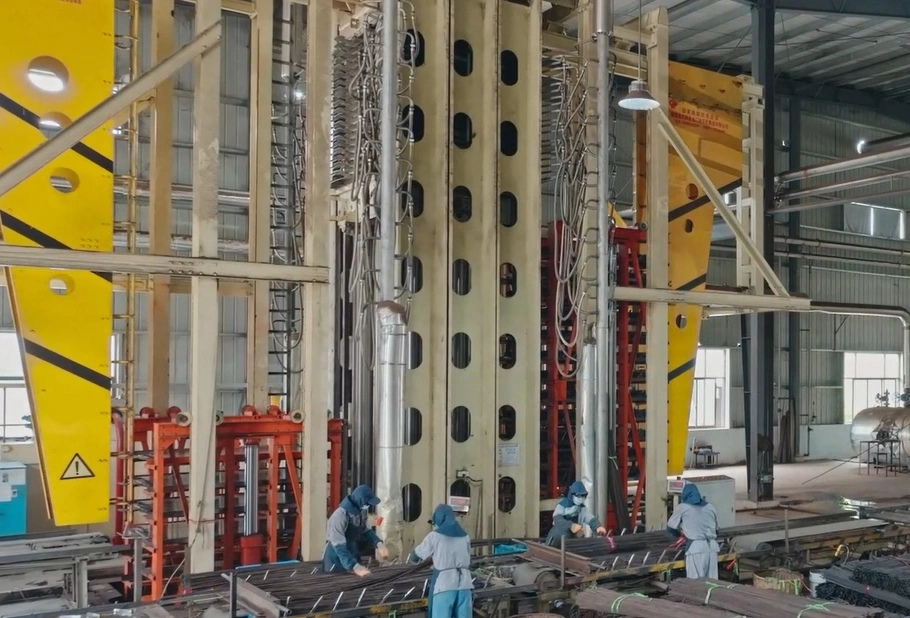
6. Shaping and Finishing
Once the hot-pressed bamboo panels have stabilized, releasing internal stress and reaching chemical and physical equilibrium, they undergo a series of precision processing steps:
This stage ensures that every product is not only beautiful and durable but also ready for long-term outdoor use.
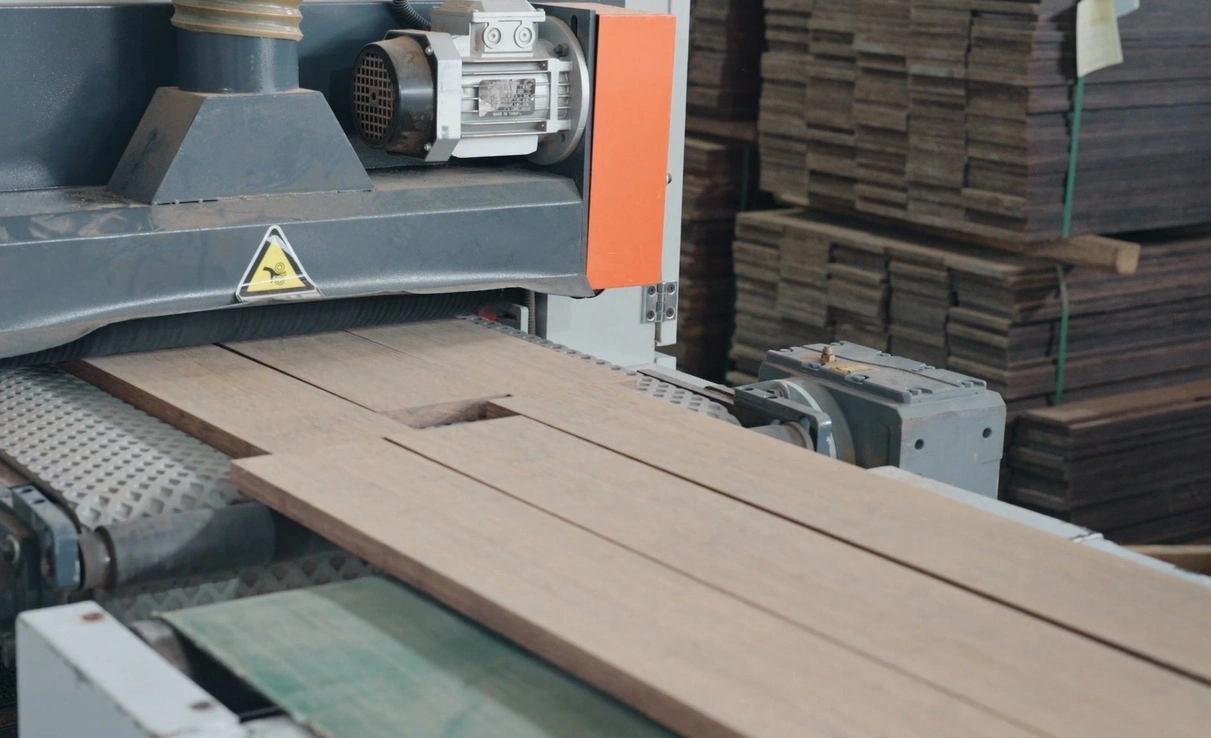
Benefits of ZHUART Thermo Bamboo
Thermo Bamboo represents a revolutionary advancement in sustainable building materials, offering exceptional performance characteristics that surpass both traditional hardwoods and composite alternatives.
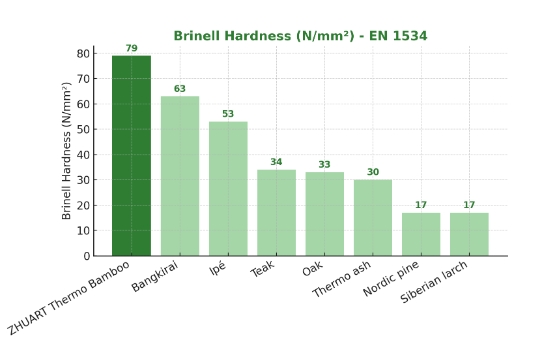
Remarkable Density & Hardness
At 1150-1250 kg/m³, Thermo Bamboo exceeds the density of premium hardwoods like oak (700 kg/m³) and even ipe (1100 kg/m³). This translates to superior load-bearing capacity and resistance to wear, making it ideal for high-traffic areas.
Exceptional Durability
With Class 1 durability rating (EN 350 standard), Thermo Bamboo offers 25+ years of service life in outdoor applications. This surpasses most hardwoods including teak and ipe, which typically achieve Class 2 ratings.
Superior Dimensional Stability
Thermal modification significantly reduces the material’s tendency to expand, contract, warp or crack with humidity and temperature changes. With swelling rates of ≤0.4% after 24 hours in water (compared to 2-4% for traditional hardwoods), Thermo Bamboo maintains its integrity in challenging environments.
Enhanced Fire Resistance
Meets Class Bf1-s1 (EN 13501-1) and Class A (ASTM) fire safety standards without eco-damaging fire retardants. This natural fire resistance outperforms both traditional timber and WPC materials, which typically require chemical treatments to achieve similar ratings.
Eco-Friendly & Sustainable
Moso bamboo reaches harvest maturity in 4-6 years (versus 50-100 years for hardwoods), absorbs 35% more CO₂ than equivalent timber forests, and ZHUART’s manufacturing process achieves over 90% raw material utilization—twice the efficiency of traditional wood processing.
Healthier Living Environment
With Class E1 VOC emission, Thermo Bamboo contributes to healthier indoor air quality compared to many treated woods and WPC products that may release harmful compounds over time. The thermal modification process naturally eliminates the need for toxic preservatives.
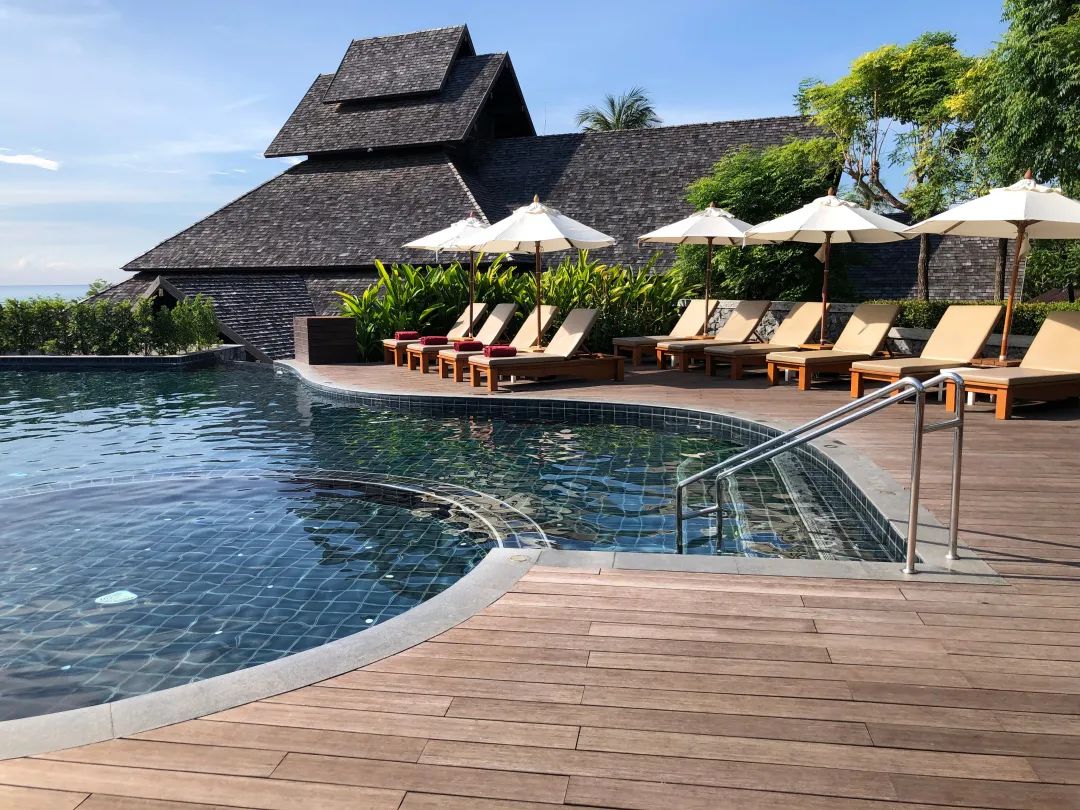
Expert Insight: While premium hardwoods like ipe and teak have traditionally dominated high-end outdoor applications, ZHUART Thermo Bamboo offers comparable or superior performance with significantly better environmental credentials. Unlike WPC products that sacrifice authentic appearance and feel for maintenance benefits, Thermo Bamboo delivers the best of both worlds—natural aesthetics with exceptional durability and minimal maintenance requirements.
Thermo Bamboo vs. Traditional Materials
Performance Attribute | ZHUART Thermo Bamboo | Traditional Hardwoods | WPC (Wood-Plastic Composite) |
|---|---|---|---|
Density | 1150–1250 kg/m³ | 600-1100 kg/m³ (species dependent) | 950-1100 kg/m³ |
Stability | Excellent | Moderate to Poor | Prone to deformation in extreme temperatures |
Resistance to Fungi | Class 0 (High) | Class 1-3 (Species dependent) | Good |
Termite Resistance | Class 10 (High) | Low to Moderate (requires treatment) | Moderate to High |
Bending Strength (MOR) | ≥80 MPa | 50-170 MPa (species dependent) | 20-40 MPa (lower mechanical strength) |
Sustainability | Harvest cycle: 4-6 years | Harvest cycle: 30-100 years | Contains non-renewable plastics |
Maintenance Requirements | Low (annual oiling recommended) | High (regular sealing/staining required) | Low (periodic cleaning) |
Natural Appearance | Authentic wood-like aesthetics | Natural beauty | Artificial appearance |
Heat Retention | Low (comfortable in hot weather) | Moderate to low | High (can become uncomfortably hot) |
Applications for Thermo Bamboo
Start Your Next Project with ZHUART
ZHUART delivers eco-smart bamboo solutions with exceptional performance and lasting durability.

